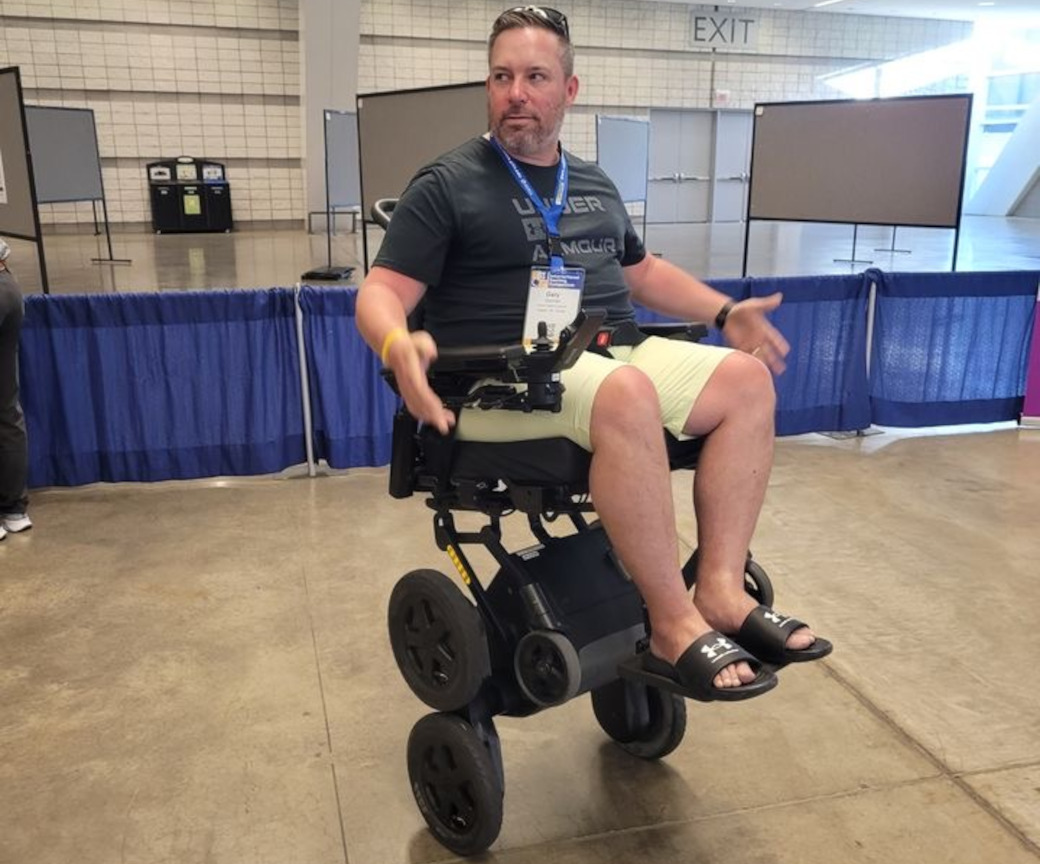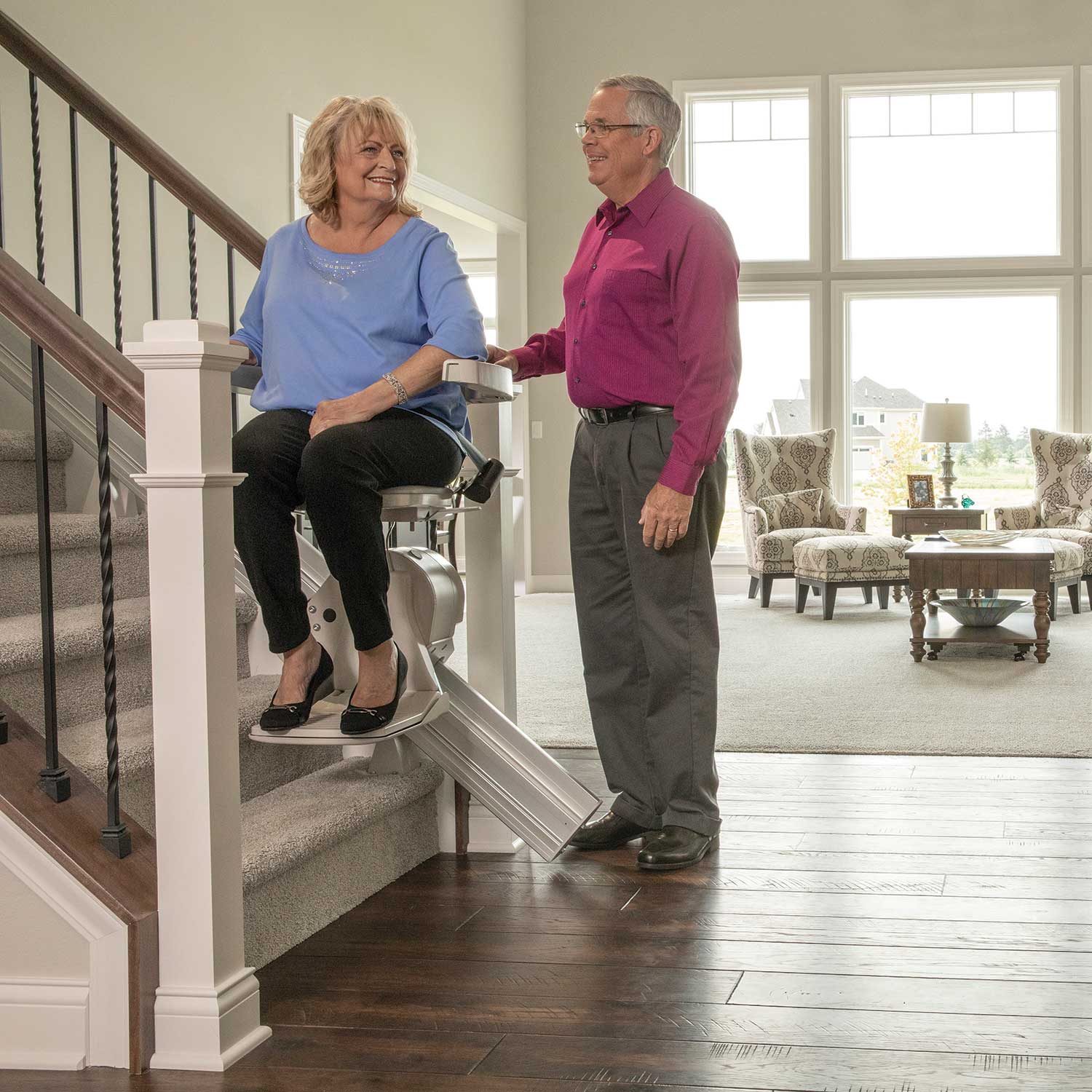As we grow older or face mobility challenges, the simple act of moving from one…

International Seating Symposium (ISS)
As most that work with us know, we are committed to education within the Assistive Technology field and it was important to have our company represented at the International Seating Symposium in Pittsburgh. We are one of the few Canadian companies that have sent representation to learn and network within this small community. Over the next few days we will take you through some of the key themes at ISS and introduce some of the new product that will be launched over the coming months.
Day 1 at ISS
Education Sessions
Day 1 started with a plenary session discussing Diversity, Inclusion and Equity and was led by Chaz Kellem. What stood out to me most related to how our funding program works and the limits that it has for our clients. AADL does a great job relative to other regions in funding equipment but there is always room to grow and change the mantra that equipment is funded to fulfill “basic needs”. The question I would pose to everyone is what would you consider to be a basic need? Does limiting access to options such as power elevation or power standing or additional options in the manual wheelchair category prevent our clients from reaching their full potential. As was also mentioned in the education session looking at the importance of properly measuring a manual wheelchair, our end users did not choose to be in a chair and we should be doing everything we can to thrive in their environment.
I was able to attend other education sessions today first focusing on the headrest and how the segments from the pelvis to the skull influence our head position and strategies were discussed on how to improve head position. A key takeaway is we are not all symmetrical and we need to look at how we can get the head in the most functional position. After some time in the exhibit hall we continued with the session on rigid manual wheelchairs and the important measurements to ensure optimal configuration of the wheelchair. Lastly we finished on how utilizing dump can influence posture and finally a research study on propelling with hemiplegia. A lot of good information was presented and I am excited to see how we can implement it in Calgary.
Exhibit Hall
Like every major conference there is almost too much to see in such a short period of time. There were also some new product launches and prototypes which will be exciting to see how they play out. Permobil launched its new carbon fibre manual wheelchair which aesthetically looks very modern and space age. RGK/Sunrise also had their new carbon fibre manual wheelchair. Both chairs are extremely light and offer a new option for our clients. I also took the time to get behind the wheel of some alternative controls that were new to us. First was the eye gaze through Tort Technologies. This was extremely easy to drive with and was very responsive to where I was looking. Second was the bluetooth control from Munevo which is similar to the gyro vigo which we currently have in our market.
I’m sure there will be more to see tomorrow and we will do a complete review of all the new product seen at ISS this year. Until tomorrow……..
Day 2 at ISS
These early starts are quite nice but they do make for a long day….We started out today in the exhibit hall where I spent a good amount of time with Stealth Technologies and they showed a new product coming out that can retrofit on another style of tilt chair and is essentially a 2 back system; one to lock the pelvis in and the other for comfort in the upper back. There is a pivot point in the back above the bottom cushion to “recline” and when done has minimal shear in the upper back. A neat concept that takes the segmental approach that I learned from the day 1 session. Other highlights in the exhibit hall was visiting the Movis booth where they have improved their chin control “bib” to be much more streamlined and comfortable. In addition they had their foot control mounted on a chair and while I have been in the industry a long time this was the first time driving foot control and I LOVED it! I can see it is a good option for some of our ALS clients that can still control their feet well. I honestly enjoyed it over driving with a joystick.
I attended a lot of good sessions yesterday starting with the plenary speaking on the importance of proper credentials and certifications in the industry which Canada is greatly behind on. There are different credentials available for those willing but our systems have not required them making it difficult to hold dealers accountable. There needs to be a push in the coming years to drive more certifications and not just shoot for the lowest bar. I will be looking closely into the RESNA certifications as we need to be a leader in this. Following the plenary I attended presentations of 3 research studies. The first paper was a good reminder that in all our clinics and our businesses we should be auditing when clients come back so we can see if there is a trend in what we are doing or if there are some other factors that contribute. The second paper I found quite interesting and have to go back and do some experiments on but they had a population of para’s and quad’s in power mobility with tilt and recline to assist in skin health but when they were going back into the recommended tilt and recline position peak pressure was increasing in the area of the IT’s which is counter to what we are all told/taught. I have some ideas as to they why this is happening that I am looking forward to trying out with our pressure mapping system. I’m curious if it is the order that they are moving to that end position (i.e. are they tilting then reclining or vice versa) or maybe they are using a positioning belt which isn’t allowing them to completely offload? So many questions got me thinking…..
The second session was a discussion on the progression of ALS and that we should start early with power mobility to hopefully slow the progression down. One thing the presenter mentioned that was interesting was that their clinic sees an increase in the progression with the amount of falls a client has. They don’t have data on it but they are looking at tracking that in the future. A good discussion was had on different set ups and switch locations which I will take back to our work with our ALS clients. I was also in a session on vibration on manual wheelchairs which was interesting and the take home is that vibration is a comfort issue and likely the amount of vibration our clients experience is not “harmful” based on current standards. Also, the more rigid your base the more vibration you are susceptible to. Lastly was a new device by LUCI that can monitor a single valve air cushion. It is currently in the development stages but it is offering promise on providing users information on their inflation which is important if clients’ environments are changing (i.e. temperature, altitude). It will be interesting to see how this product develops in the near future.
Tomorrow is the last day with more education sessions and then on the way home. Stay tuned for a quick update on the last day and then we will follow with some product reviews from what we saw this week!
Day 3 at ISS
The last day at ISS is here and it has been a great week so far getting back to see and learn about new and emerging products and ideas. Today was only educational sessions to finish off the week and I started at another paper session which started with looking at segmental trunk control in children with CP. It was an interesting discussion but fell more into a therapy modality and not as much about seating. The second session was another discussion on vibration and its effect on a manual wheelchair user. They looked at differences between rear wheel type on vibration and shock and they yielded similar results to a previous session I attended yesterday. The moral of the story with vibration and products that reduce it is there is a tradeoff between minimizing the vibration and how difficult it is to propel the wheelchair. As with most options there is always a compromise…The last paper was a project on an adapted exercise machine (a rowing machine). They were able to get a good stable machine adapted from the Concept 2 rower and they currently have some throughout Canada. The next challenge was developing one that would be for the home and they have found a possible option that would work that is lower cost. It will be something to keep an eye on in the future.
The last education session was looking at custom seating using the SPEX product on various high need clients in Argentina. I was impressed with how well the clients could be positioned using a custom adjustable product and it will be something I look at using in the future. The biggest challenge with SPEX in our market is availability and price but it is a good product. Lastly to finish off the day was the closing session with a keynote by Steven Spohn who is with an organization called AbleGamers. They work to get all people able to be involved in video games and get involved with their outside world. It is something that we would like to be in the forefront of and be able to offer solutions for our clients.

